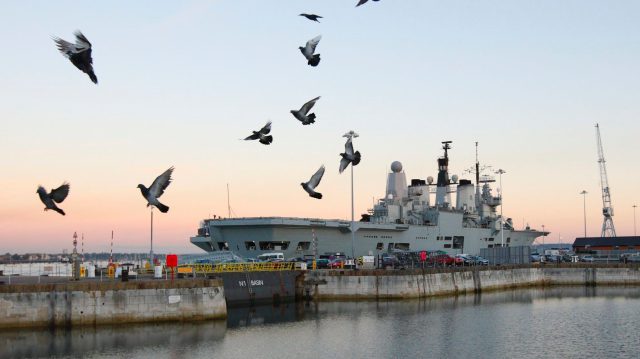Pigeons flying near HMS Ark Royal in Portsmouth. Chris Ison/PA Archive/PA Images

It says something for the human imagination that we can conceive of technologies that might never be possible – for instance, time travel.
However, sometimes we find evidence that something we can’t do yet is possible, because someone else is already doing it. That ‘someone else’ could be a rival company, a rival power or, in theory, an alien civilisation. Alternatively, it might be mother nature, as Gregory C Allen explains in a fascinating/terrifying piece for War on the Rocks:
“Every type of animal, whether insect, fish, bird, or mammal, has a suite of sensors (eyes, ears, noses), tools for moving and interacting with its environment (arms, beaks, wings, fins), and a high-speed data processing and decision-making center (brains). Humans do not yet know how to replicate all the technologies and capabilities of nature, but that these capabilities exist in nature proves they are indeed possible.”
His question is what happens once we’re able to produce military robots with such capabilities. But never mind the super-predators of this world – like the tiger or the killer whale – just “consider the common city pigeon”:
“The pigeon has significantly more flight maneuverability, better sensors, faster data-processing capability, and greater power efficiency than any drone. The combination of a pigeon’s brain, eyes, and ears is also superior at navigation and collision avoidance to the computer and sensors of any autonomous car, despite requiring less than one watt of power to function… it’s as though an alien spaceship has crash-landed on earth with super-advanced alien technology.”
Allen’s point is that military research is closing in on these capabilities – and thus we should study the natural world to see what the weapons of the future could look like:
“Imagine a low-cost drone with the range of a Canada goose, a bird that can cover 1,500 miles in a single day at an average speed of 60 miles per hour. Planet Earth profiled a single flock of snow geese, birds that make similar marathon journeys, albeit slower. The flock of six-pound snow geese was so large it formed a sky-darkening cloud 12 miles long. How would an aircraft carrier battlegroup respond to an attack from millions of aerial kamikaze explosive drones that, like geese, can fly hundreds of miles?”
It’s not a case of new technology improving pre-existing military systems, but rendering them obsolete.
It wouldn’t be for the first time. Weapons and defences that once dominated the theatre of war are now museum pieces. Consider the sword or the castle – literally blown away by gunpowder.
Admittedly, gunpowder coexisted with medieval modes of warfare for hundreds of years. It took many generations for our forebears to develop the firearm and cannon technologies required to make full use of gunpowder’s explosive potential. Today, military drones are used alongside (or against) the weapons of the 20th Century. But at the current pace of technological development this period of coexistence is unlikely to last many decades, let alone centuries.
I hope that our defence policies are keeping pace – otherwise the only animals we’ll be emulating are the white elephant and the sitting duck.










Join the discussion
Join like minded readers that support our journalism by becoming a paid subscriber
To join the discussion in the comments, become a paid subscriber.
Join like minded readers that support our journalism, read unlimited articles and enjoy other subscriber-only benefits.
Subscribe